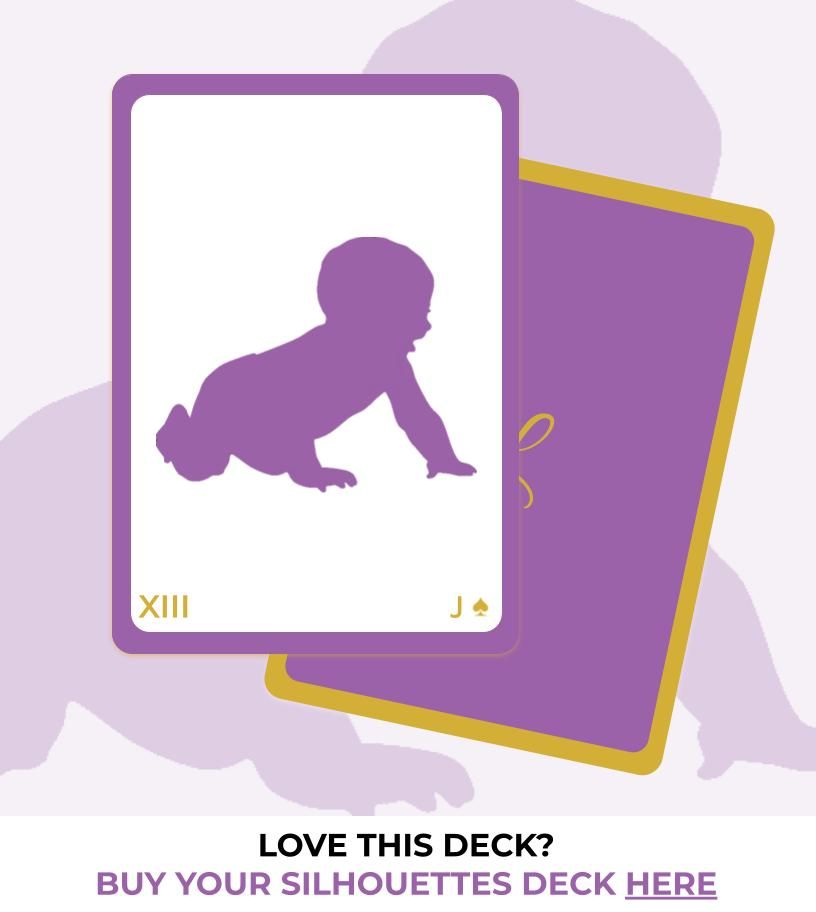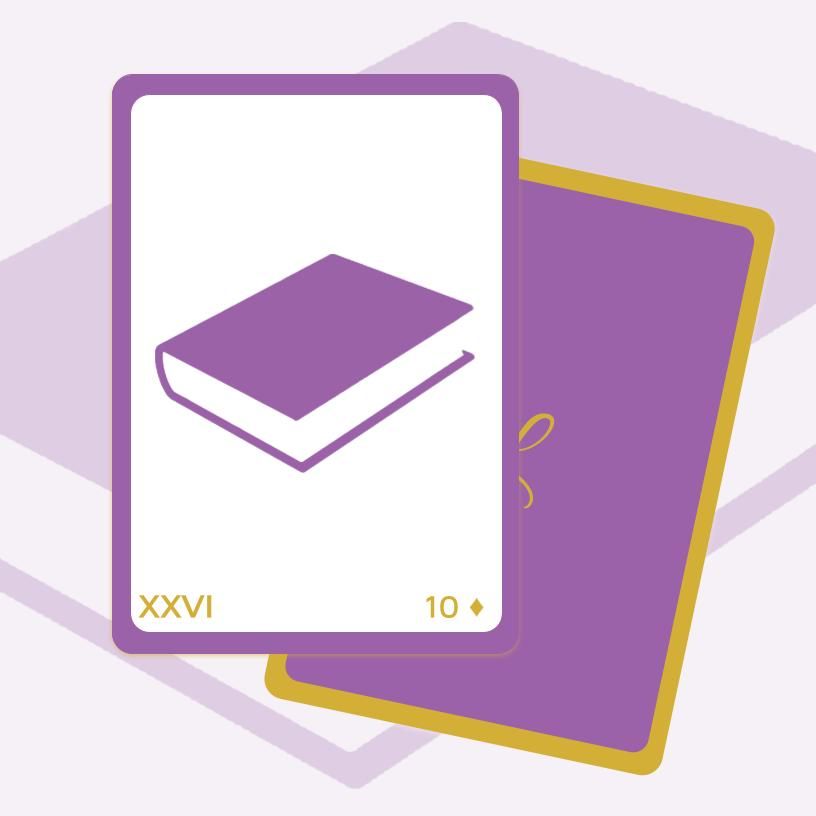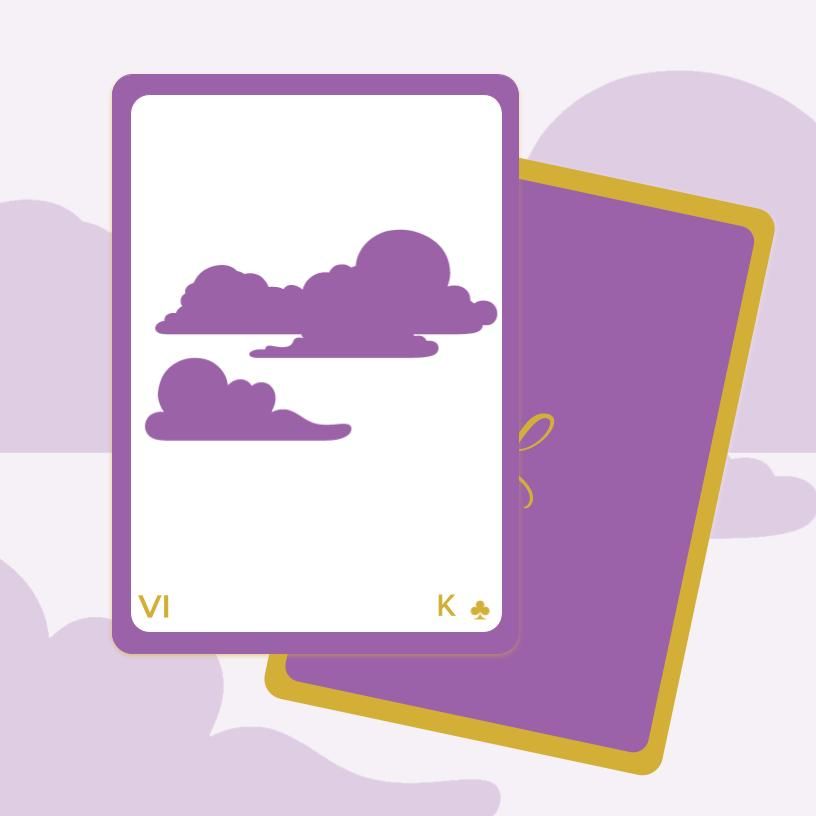THE CHILD (13)
LENORMAND CARD MEANING
LENORMAND CHILD: FEATURES & KEYWORDS
The Child is the 13th card of the deck, it is associated with the Jack of spades, and it is bright and positive.
POSITIVE / NEUTRAL KEYWORDS Children, New Beginning, Joy, Play, Creativity, Freedom, Innocence, Small, Naivety.
NEGATIVE KEYWORDS Inexperience, Immaturity, Gullibility, Lack of seriousness, Small problem, Minor importance.
LENORMAND CHILD: DESCRIPTION
The Child card is often illustrated as a young, happy figure, typically a child in play. This imagery universally evokes themes of innocence, joy, and smallness. Visually, the card's lightness emphasizes its core meanings of a new beginning or something that is minor in scale. The atmosphere is usually one of freedom and creativity, reflecting unburdened play. The figure’s youth naturally highlights themes of naivety and inexperience, which are visually inherent in the card’s representation.
DOWNLOAD YOUR LENORMAND CHEAT SHEET
LENORMAND CHILD: CARD MEANING OVERVIEW
The Child card is one of the most distinctly multifaceted cards in the Lenormand deck, powerfully signifying both a person and a concept. It is the primary indicator of literal children, youth, and innocence, but its most frequent and critical function in readings relates to beginnings.
The card essentially refers to children but it also indicates first steps, new beginnings, starting out, or starting over. This signifies a project or situation that is in its nascent stage, characterized by minimal complexity and high potential. When the Child appears, it brings spontaneity, lightheartedness, fun, and joy to any situation, suggesting an unburdened outlook. It is fundamentally a card of openness and innocence. Through its core association with children, it also powerfully represents creativity—the ability to approach life with curiosity and imagination.
Crucially, the Child almost always suggests something that is small, minor, or minimal in scale. It downgrades the severity or scope of any card it lies next to, indicating a small problem, a minor amount of money, or a short trip.
However, the card’s inherent innocence carries a dual meaning that requires careful interpretation. While its positive energy emphasizes joy and a fresh start, the Child can also signify naivety, inexperience, immaturity, or gullibility. Depending on the surrounding cards, it can serve as a warning: are you being too trusting, or is the situation too small to warrant serious long-term attention? Understanding the card’s influence on scale is essential for moving beyond its literal meaning and into nuanced, accurate interpretations.
LENORMAND CHILD: POSITIVE AND NEGATIVE
The Child card is predominantly a positive, or at least highly favorable, neutral card in the Lenormand system, suggesting innocence, unburdened joy, and fresh, exciting potential. When appearing alone or surrounded by favorable cards (such as the Sun or Clover), the Child is a wonderfully encouraging sign. It is exciting for all matters concerning literal children and family, often signifying happiness, growth, or a new addition to the home. The card confirms that the situation is marked by spontaneity, simplicity, and fun. For projects or endeavors, it strongly heralds a successful new beginning or a chance to start over with a clean slate. It infuses the reading with an atmosphere of creative play and unreserved optimism. The scale of the issue is deemed small and manageable, which in itself is a positive assurance that major complications are not at hand. The Child affirms a time of lightness and honesty.
However, the Child is not normally negative unless directly accompanied by challenging or severe cards (like the Whip or Scythe). In such combinations, its core themes of youth and smallness can skew toward unfavorable outcomes. Negatively, the card suggests immaturity, inexperience, or a reckless lack of seriousness. It can warn that a venture is being started prematurely without proper planning or resources, leading to potential failure. It may also signal gullibility—the querent is too trusting and vulnerable to manipulation. Furthermore, the "smallness" indicated by the card can become a negative burden, representing a minor but persistent problem, a development that is too slow, or a resource that is too minimal to sustain the intended project. The lack of seriousness or maturity becomes the critical obstacle to success.
LENORMAND CHILD: CORRESPONDENCES
A fundamental principle of the Lenormand system is that each card, including the Child, can be interpreted for any life context—a concept I refer to as correspondences. In general, the Child consistently delivers themes of new beginnings, smallness, innocence, and joy across all situations. This card urges a fresh, optimistic look at the world. For those learning how to read Lenormand cards, mastering these correspondences is essential for moving beyond generic meanings into truly personalized, accurate interpretations.
- Work & Career: In a career reading, the Child signifies a new job, an entry-level position, an internship, or a successful period of learning. It points toward careers dealing directly with young people, such as school teachers, daycare providers, or pediatric care. More broadly, it signals a time of happiness at work, suggesting the environment is lighthearted, supportive, and unburdened by heavy responsibilities. It advises a willingness to learn and embrace a beginner’s mindset.
- Money & Finance: For financial matters, the Child is the card of small investments and first steps. It warns against going all in on a scheme, instead advising small steps and caution until a venture is proven. It often represents a new source of income that may be currently minimal but has growth potential. It can also point to money that is spent on children, education, or playful/creative pursuits. The overall financial picture is usually modest but not dire, indicating small amounts and the earliest stages of fiscal growth.
- Love & Relationships:In the context of relationships, the Child can herald a new love interest that is fresh and tender. It signifies innocence in the dynamic and emphasizes themes of having a family or wanting children. The relationship is characterized by tender love, playfulness, and emotional vulnerability. The warning here relates to oversensitivity or emotional immaturity in one or both partners, making the bond susceptible to minor upsets.
- Health & Wellness: Regarding health, the Child’s correspondence relates to the body parts of the chest, breast, and the integumentary (skin) system. It often points to conditions associated with youth, such as growing pains, chicken pox, whooping cough, or other minor childhood illnesses. Crucially, the Child is a prime indicator of pregnancy (a new beginning within the body). It advises an approach to health that is simple and based on fundamental care, but it can also signify the immaturity of a disease, meaning it is too early for a clear diagnosis.
- Spiritual & Personal Growth: On a spiritual level, the Child corresponds to connecting with the inner child, encouraging openness, curiosity, and play. It is about returning to a state of innocence and purity, allowing one to approach familiar concepts with a new perspective. The card advises seeing understanding with new eyes, unclouded by cynicism or past failures, and embracing a fresh philosophical start.
- Character & Personality: As for character, the Child represents a person who is literally a child or someone who is young at heart. They are often characterized as childlike, playful, and spontaneous. While generally positive, this card can also describe someone who is childish, immature, naive, or prone to temper tantrums if surrounded by negative cards.
Remember that while the Child is typically a positive card, its energy is fundamentally shaped by surrounding cards, which is true of most Lenormand cards. With challenging or negative cards nearby, these correspondences can skew negative. For instance, the new love can be incredibly immature or emotionally volatile, and the small investment can be too small to survive or a symbol of being gullible in a financial scheme. Understanding these nuances—specifically how the neighboring cards temper the Child’s innocence and scale—is key to an accurate Lenormand card reading, rich with depth and insights.
LENORMAND CHILD: ADVICE
When the Child appears as advice in a Lenormand reading, its central message is to embrace a posture of newness, openness, and simplicity. It strongly advises you to take those new steps you have been contemplating, as the time is right for a fresh start or a complete overhaul of a stagnant situation.
The card encourages you to be open to experiences and to approach the issue with an open heart, leaving behind cynicism, heavy expectations, and past disappointments. Its presence is a call for spontaneity and an invitation to reconnect with your creative, playful energy. The advice is to see the situation with innocent eyes, asking simple questions and appreciating the joy found in small things. Do not overcomplicate the matter; a light, flexible approach is best.
However, the Child also carries a crucial warning nestled within its lighthearted counsel. It advises you to recognize the small scale of the current situation. Do not commit major resources or irreversible decisions yet; the situation is still in its infancy and needs time to grow. If the surrounding cards are negative, the advice is to be cautious about immaturity or naivety. Ensure your approach is not too childish or ill-prepared. In summary, the card asks you to welcome the newness with joy and simplicity, but to temper your enthusiasm with a small dose of adult supervision and discretion.
LENORMAND ANCHOR: IN THE PORTRAIT
When the Child appears on a key position of the nine-card Portrait spread, its energy becomes highly focused, influencing the core subject of the reading.
In the crucial first card position (representing the querent’s attitude or role), the Child advises approaching the situation with spontaneity and optimism. It encourages you to be playful and adopt its positive traits of curiosity and joy. This placement might literally indicate that the querent's child or a young person is the primary influence on the matter. It also suggests the querent wants a family or is starting to plan for one.
In the central card position (representing the essence or outcome), the Child suggests that the situation is a new beginning and is currently small in scale. It advises against over-investment and encourages taking first steps and moving in a new direction with lightheartedness. Alternatively, this central placement can allude to a need to address the inner child—healing past wounds or reclaiming lost joy—as a requirement for a positive outcome. Regardless of its position, the card confirms that the situation is fresh and manageable.
LENORMAND ANCHOR: IN THE GRAND TABLEAU
In the Grand Tableau, the Child's proximity to the querent’s significator (man or woman) reveals the immediacy of its influence.
When the Child is near the significator (within a few card positions), it indicates an immediate focus on a literal child, a swift new beginning, or an atmosphere of happiness, good friends, and supportive connections that are close at hand. Its near presence suggests the querent is currently surrounded by kindness or that a situation is still small and manageable.
Conversely, when the Child is far from the significator, the potential for a new beginning or the influence of a child is set for the more distant future. It also suggests that the querent is currently outside of that immediate, lighthearted influence, perhaps feeling less spontaneous or dealing with larger, more serious matters.
Regardless of distance, the Child maintains its overall positive influence, acting as a welcome sign of freshness and innocence in the reading. Its position in a specific House will pinpoint the life area—such as the House of the Ring (a small commitment) or the House of the Ship (a short trip)—where this positive, new, or minor energy will manifest.
LENORMAND CHILD: IN SOME CARD COMBINATIONS
The Anchor With The... Means...
CHILD + BEAR Stepping up to a bigger role, a promotion, or an important new beginning. The child's influence affects a powerful, maternal/paternal figure.
CHILD + COFFIN Completion of a cycle and the start of a new, minor one. Can indicate a small ending or a situation that remains static and small.
CHILD + DOG New friends, a developing friendship, or socializing with a younger crowd. The friend is likely childlike, loyal, and fun.
CHILD + FLOWERS Fun and joy, someone bright, or a cheerful young girl. A delightful combination signifying happiness, small gifts, or a pleasant party.
CHILD + FOX A tricky start, a new job requiring caution, or a child hiding something. Signals a need to be wary of immaturity or a small, self-serving agenda.
CHILD + MAN / WOMAN Someone with children, or a person who is childish/immature (especially with negative cards nearby). It places the theme of youth onto the person.
CHILD + MOUNTAIN A new direction or new life chapter whose importance is not yet known. Can suggest a small challenge or a minor obstacle that needs simple effort.
CHILD + RIDER A new goal, a new direction, ambition, or a journey just begun. News about a child or a message that sparks a fresh start.
CHILD + STAR Wish-fulfillment on a small scale, pure joy, or lighthearted merriment. The beginning of something that aligns with a hope or desire.
CHILD + SUN Freedom, freedom of expression, or success in a new venture. A very positive blend indicating successful beginnings and a happy, unburdened outcome.
The order of the cards (or directionality) often matters. Here are a couple of examples:
CHILD + BOOK Closed off, shy, or secrecy regarding a child. The child or new beginning is marked by holding back or privacy.
BOOK + CHILD Opening up, a new chapter, or a revelation about a child/new start. A hidden situation or knowledge becomes fresh and accessible.
CHILD + TOWER A beginning that unfolds over a long time. A new situation that is slow to develop or is tied to an institution.
TOWER + CHILD Turning the page on the past, releasing a phase, or letting go. An established structure or long-term plan concludes to make way for a new beginning.
DOWNLOAD YOUR LENORMAND CHEAT SHEET
Lenormand card images courtesy of Lenormand Reader's Silhouettes Deck.




